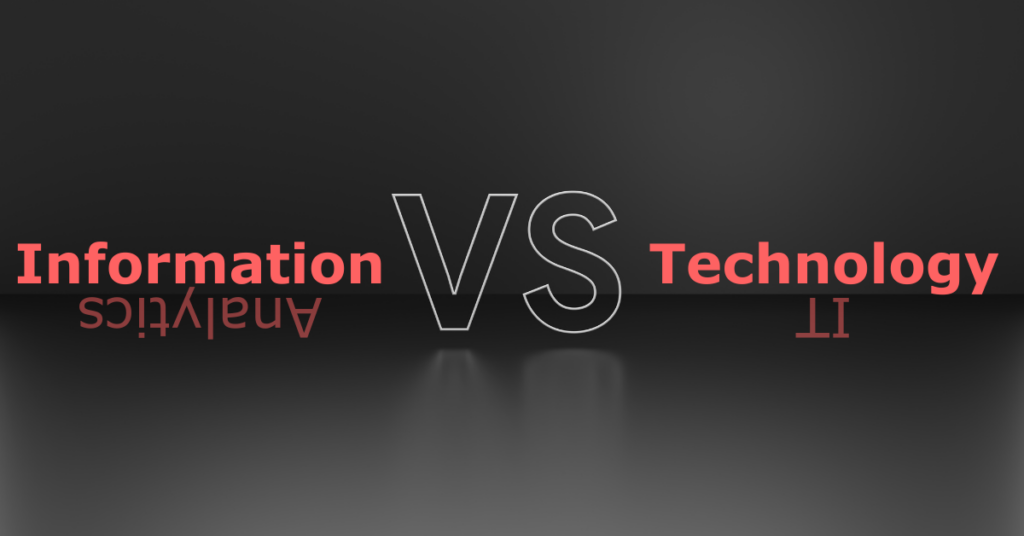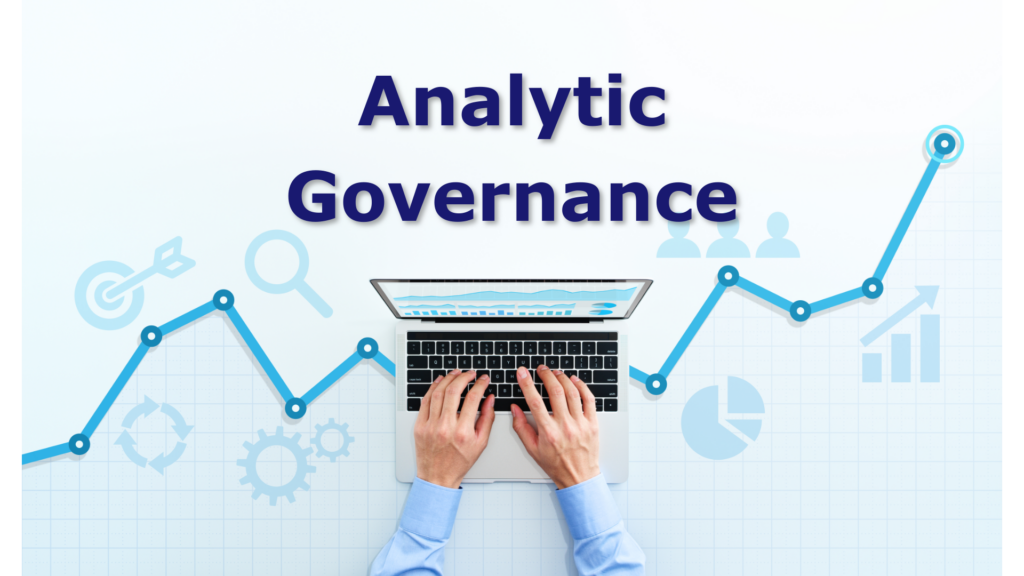A business acquaintance once said to me, “Hey, you’re an IT guy…can you help me get my computer working?” Really? Is data analytics really part of IT?
Am I an IT Guy?
I’m a researcher, first and foremost. My strengths are in research design and statistical data analysis. I’ve spent some years doing interview-based qualitative research, many more years doing quantitative statistical analysis, and projects using both methods.
I’ve worked as a tenure-track university professor and as a government contractor in healthcare quality improvement, doing policy evaluations. So, you might imagine my surprise when I was described as “an IT guy.”
Turns out there are A LOT of people who think of data analytics as part of the IT function in business. As a career analyst, I can say with certainty that I disagree with this description of data analytics.
Certainly, the placement of analytics within an organization plays a role in how effectively data is used to gain insights. Read more about what I’ve written on the implications of organizational structure for analytics.
However, Doug Laney, author of Infonomics might have described it best when he wrote, ”Most companies have an IT organization, but they haven’t thought about the benefits and possibilities of decoupling the ’I’ from the ‘T’ and managing information and technology as separate assets.”
Laney posits that most companies have traditionally housed data analytics within their IT departments, yet this arrangement may not fully capture the strategic value analytics can offer.[1] By treating Information and Technology as separate but complementary assets, businesses can unlock new levels of insight, agility, and innovation.
The Case for Independence
Okay, I admit it. I am biased in favor of having more autonomy for data analytics. But there is a strong logical case to be made.
Historically, IT is primarily focused on managing technology infrastructure and ensuring operational efficiency. You need a server spun up, managing complex application licensing requirements, or maintaining the firewall on your web portal? Call IT. That’s their domain all day long.
In contrast, if you need to leverage organizational data to inform strategy or drive decision-making, then you need data analytics. This strategic role extends beyond the traditional realm of IT. It’s one thing to set the system up and keep it running efficiently. It’s another to be able to produce knowledge and answer questions with it.
Strong data analytics requires critical thinking skills in the areas of research design, measurement, statistical analysis, and programming. The staff in these roles need to understand critical business problems as well as the nuances of data. While they need to understand IT systems sufficiently to complete their work, they focus on creating actionable insights.
Based on these functional differences between IT and analytics, it’s clear the two units have different skill sets and responsibilities. However, let’s dig a bit deeper into the idea that data analytics should not be part of IT.
The Strategic Role of Analytics
It’s probably been five minutes since you last heard the analogy of data as the new oil. Analytics, therefore, is the refinery creating gas and the combustion engine burning it to produce power.
In this era, analytics is a driver of business value: measuring the pulse of the consumer, contributing to strategic planning, and supporting operational decision-making. An independent analytics function can ensure that data-driven insights are seamlessly integrated across all units in the organization.
Analytics use cases exist across all business units in the organization. Because of this strategic positioning, analytics should not be viewed as a bolt-on function or subset of another unit. Rather, it should be viewed as a core strategic entity. Read more about why analytics is not a bolt-on business function here.
Organizational Alignment and Focus
When analytics is housed as a unit within another IT department, there are frequently conflicting directives about priorities. Often, IT directives take precedence because they are considered the dominant unit. The result is a data analytic team constrained by whatever IT’s focus is that day, week, month, or year.
In contrast, treating analytics as an independent entity allows creating stronger focus and efficiency. The team can optimize policies and processes for maximum effectiveness. This means analytics can integrate more easily with other business units and leverage data as needed across the organization.
Furthermore, integrating a standalone analytics entity with other units ensures that analytic projects are better tied to business-relevant outcomes. This tighter coupling of analytic projects to business outcomes also generally results in stronger and more directly actionable insights.
Fostering a Data-Driven Culture
Creating an independent analytics entity also serves as a catalyst to spread a data-driven culture across the organization. The decision signals the importance of analytics to leadership and using data throughout.
When housed inside IT, analytics might become hidden behind a wall of support ticket systems and deployment schedules. Staff in other units disengage because analysts are viewed as being inaccessible.
As an independent entity with appropriate analytic governance policies, analytics is less likely to be seen as hidden within IT. Rather, analysts can be put in the spotlight to emphasize their success stories. Read more about analytic governance in this article.
Allowing analytics to more effectively integrate with other business units also creates culture by example. Analytics staff can lead the charge across all units to identify use cases and encourage using data in everyday decision-making.
Enhancing Collaboration Across Departments
Separating analytics from IT can also foster better collaboration between the analytics team and other departments.
Most business units do not have much choice in how IT implements its policies and processes. This can frustrate staff, often leading to the familiar us-vs-them attitudes toward IT.
By moving analytics out from under the IT umbrella, the team can better focus on collaboration with other units. Similarly, staff in other units can view analytics without experiencing the ingrained frustration of working with IT.
This structure encourages departments to work closely with analytics experts to identify opportunities for data-driven improvements and innovations.
Such collaboration can lead to more tailored analytics solutions that directly address specific business challenges and opportunities.
Leveraging Advanced Technologies and Skills
An independent analytics department can attract and retain specialized talent more effectively.
As I mentioned earlier, I never considered myself part of IT. So, I would be unlikely to apply to an analyst role that was housed inside an IT unit. Read more about whether analytics is really part of IT.
To attract staff with higher-end skill sets, businesses need to demonstrate commitment to the roles. Creating an independent analytics unit does exactly that, showing applicants that their roles are valued as strategically important.
More skilled staff also means you’ll be able to use more advanced technology. Attracting data scientists and business analysts is crucial for developing and implementing more advanced capabilities.
Conclusion
Doug Laney’s concept of decoupling “Information” and “Technology” highlights the need for a reevaluation of how data analytics is positioned within organizations.
Establishing analytics as an independent entity has several advantages for an organization. The company can more effectively harness the power of its data to drive decision-making, innovation, and competitive advantage.
This shift can also align analytics initiatives more closely with critical business strategies. Finally, it can help foster a culture of data-driven decision-making across the organization.
Is data analytics really part of IT?
Many currently say yes; however, there are compelling reasons to change this perspective.
As businesses continue to navigate the complexities of the digital age, rethinking the placement of the data analytics function could be the key to unlocking unprecedented levels of insight and value.
[1] Laney’s research was also keenly interested in the organizational structure of leadership for analytics. He argued that it is better to have a Chief Data Office (CDO) who is responsible and accountable for all information assets and data governance across the organization.




